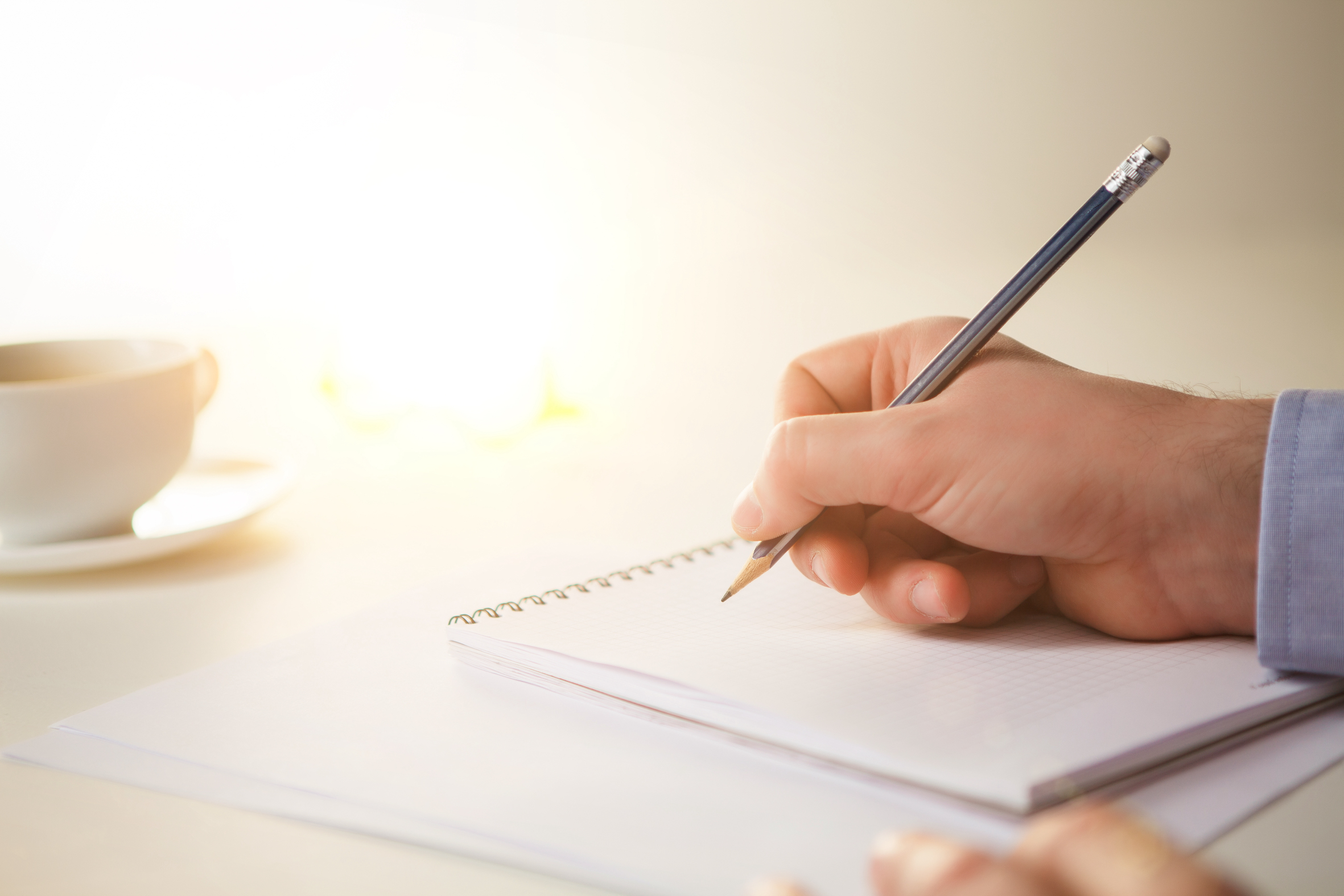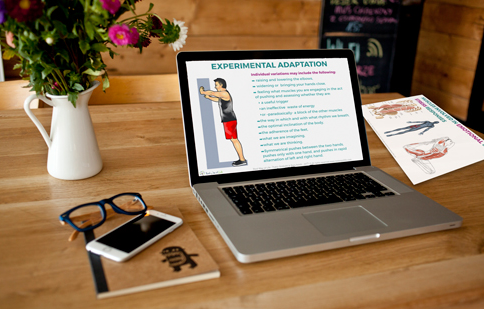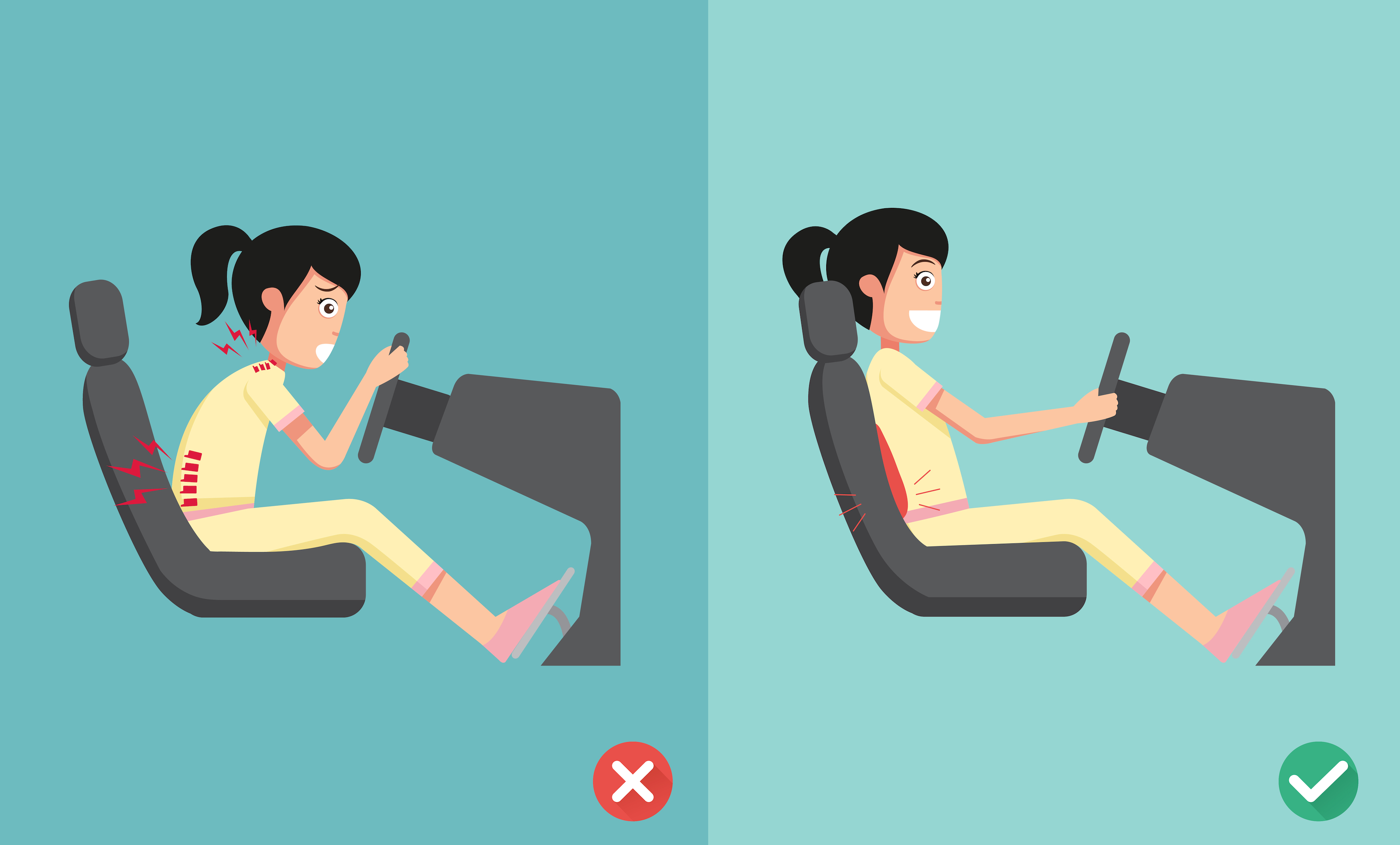
How to overcome Stress and Anxiety through the Power of Body Maps, Posture and Movement
Jan 07, 2023Have you ever tried a “fusion experience” with your motorbike, horse, musical instrument or a tool that you use often?
If not, perhaps you have had an experience of watching musicians or sportsmen who seem to have become one with their tools or instruments.
It seems magical, but actually it’s the result of a refined elaboration of our body.
We are talking about BODILY MAPS.
We can also experience how bodily maps work when we lower our heads automatically if we pass through a small door, bending our legs just enough to protect our heads—but not too much—in order to avoid an excessive effort. When we are wearing a hat or a helmet, we automatically bend our legs a little more. This is not a conscious process. We do it without thinking about the helmet’s height or weight because we have integrated the helmet into our bodily representation as a part of us.

Another practical demonstration of these mechanisms is when we use a fork to eat our dinner, or a pencil to write or draw. We move with fluidity when using these “non-living” extensions and know implicitly how to gauge the distance from our food to our mouths, or guide the pencil to paper.
A particularly interesting example is that in extreme situations our body knows how to use a different type of unconscious information.

An interesting experiment is to ask a blindfolded person who can’t see anything—not even a glimmer of light—to walk. If we place some carton as barriers along their walking route, the blindfolded people bump into them;—even those who declare that they are particularly sensitive and intuitive.
However, if we ask people to speak while walking (or even just to emit a simple sound) most will detect that there is a barrier in front of them and stop before bumping into it. If we keep the person still and, while they are speaking, place differently shaped objects in front of them (eg. a triangle, a square and a circle), the blindfolded people are able to recognize the different objects. This experiment is just one of the many ways to demonstrate how many potentials the body already has and can develop if we create the conditions under which to activate and train them.
What are body maps
Let’s try to better understand what these bodily maps are, in order to take advantage of their potentialities and, on the other hand, avoid possible body degenerations.
Bodily maps are created by the brain that “writes” information for us about postures, movements, surrounding space, musculo-skeletal structure, internal organs, vital neurobiological parameters, biomechanical and biochemical phenomena and alterations.
These maps are able to influence body, emotions, feelings, awareness and sense of control.
An important aspect concerns the fact that maps can be written, altered, re-activated by the mind-body interactions, and modified while they are still active, and although in a less effective way, also just with imagination or thought.
For these reasons today we talk about the so called “embodied-cognition” and the effectiveness of bottom-up therapies; that is, starting from the body to act on behaviors, adjusting not only emotional and stress responses, but also mental abilities.
These are sophisticated mechanisms that, when properly framed, can have a significant impact, not only on the effectiveness of different therapeutic approaches, but also on the development of new abilities.
Now, let’s continue to explore the evolutionary and functional characteristics of the body.
The roots of many problems: our body was designed to move
Today’s lifestyle keeps us sitting most of the time. Sitting down can give us rest from stress or physical exercise, however we don’t need to sit down as much as we do.
Sitting for many hours goes against the physiology of our body, which was not designed for immobility. Children and teens become impatient after they have been sitting for a while, because their bodies have not yet been “domesticated” (it would be more accurate to say “switched off”). Adults realize it too when they have been sitting to do something they don’t consider useful or enjoyable, for example: a boring conference or theatrical performance.
The clear proof that the body has evolved to move lies in its structure: there are more than 360 joints and more than 700 skeletal muscles able to guarantee flexible and different movements. As well as this our skin is elastic in order to allow us to move and manage the variation of the dimension of our muscles, and our circulatory systems provides great amounts of energy to the muscles.

Sitting too long can create many problems. The spine is made for standing up, when we are sitting it tends to curve forward, creating muscular tensions, and making other muscles work to compensate.
Furthermore, it reduces the space that our lungs have for breathing, so they bring less oxygen to muscles that we are not using and also to the brain, which requires a lot of energy for studying or working. Too little space for breathing means a non-physiological block of the internal organs. For example, during correct breathing even our kidneys move for different centimetres with each exhale and inhale and our digestive organs are massaged with every breath, increasing their functionality.
More information on breathing and an effective technique to regulate our neurobiology are available in the free course Crossed Cycles Breathing (enrol now for free!!).
In these sitting conditions, the muscles of the legs are still. They are below the weight of the body and are often in tension (eg: bent legs that go under the chair), and this blocks nerves, veins and arteries, and reduces nerve signalling. In the moment, the most visible effect of this mechanism is torpor, but long-term alterations in physiology can be created that are much more significant.
Furthermore, sitting for too long deactivates lipase, an enzyme in the capillaries that breaks down lipoproteins (fats, such as cholesterol) in our blood. Thus prolonged sitting, in addition to being a clear mechanism of calorie consumption, literally doesn’t allow us to destroy fats.
Expedients for recreating physiology in the everyday life
In the light of what we have seen so far, we have considered which can be the more effective stimuli to restore a basic physiological state to our bodies in our everyday life.
It is also possible to focus on more sophisticated concepts and suggestions, but don’t underestimate the importance of recreating a basic physiology first. For further details, you can consult other articles in the blog and take a look at the various thematic modules we have developed on these topics.
A relevant aspect that often creates non-physiological situations in our everyday lives, concerns our posture. For work or to study we spend many hours of the day sitting on a chair.
The first adjustment concerns the purchase of ergonomic chairs, designed to support the biomechanics of the human body without penalizing it.
However, this is not enough:
it’s necessary to give frequent stimuli to the nervous system, muscles, and tendons, which would otherwise memorize unnatural positions.

We have already discussed bodily maps and here it’s interesting to add that muscles have their own independent memory.
For this reason, we must avoid prolonged fixed postures and vary our movements so that our brains don’t transform them into habituated postural responses. Changing our posture even slightly, getting up often (even just for two minutes every half hour), changing chairs every now and then, or continuing our work or study standing up for a couple of minutes, are all ways to avoid the non-physiological situation of “memorizing” these postures and thus making them chronic.
To work in a targeted and structured manner on these mechanisms we have developed two specific and scientifically validated techniques: Isometric Emotions and Interpersonal Accommodation.
Head and Stress in everyday life: from computers to cars
In this type of activity, our head plays a central role. When we we sit in front of a computer screen, or read a book, we are nearly always in unnatural positions. Most people tend to bring their head forward and incline it downwards, but some compensate by pulling the head excessively backwards, trying to respect its natural position but often significantly stiffening their neck.
As we have seen in other articles and webinars, these phenomena are also in a two-way communication with an anxious type of breathing.

Even if we just focus on the physical aspects and causes it’s easy to understand how working with a laptop immediately leads to assuming wrong postures: the screen is too low for us to keep our head high, the keyboard usually is in front of the screen and drives us to keep our hands—and, as a consequence, our shoulders—too high.
But don’t worry, you won’t need to throw away your laptop!
There are different solutions to adopt:
1) you can buy specific computer stands that raise the height of the screen and with an external keyboard and mouse, then the game is done. You can also find pretty designs that are a little bit more expensive, but also practical, easily movable and cheap solutions.
2) An alternative to the computer stand is to use an external and bigger screen in the place where you use your computer most often. This will bring greater physiology also to your eyes, which use less effort thanks to the wider and more readable fonts, and it also enables the body to through more ample (i.e. less constricted) movements.
At this point it is useful to remember three important links between eyes and health:
- wide movements of the eyes in different directions can activate nearly every cerebral area,
- the eye focus is related to the sense of mastery and self-regulation,
- the brightness that strikes our eyes regulates our alertness and hormonal balance.
Those who are interested in deepening these aspects and the mechanisms that govern them can find numerous explanations and practical references in the various Brain Networks’ modules.
We have focused our examples on situations of study and work, but consider how similar conditions can be created driving our car, riding on public transport and in many other situations. In these cases, the same types of adjustments can be applied.
To take a very common example, let’s consider the position of the head while we are driving. Most people bend it forward, forcing the muscles of the neck into an unnatural position that inhibits normal breathing and creates a negative biofeedback. This indirectly stimulates an emotional reactiveness that is far greater than required.
A correct position of the seatback should allow you to drive comfortably with the head on the headrest. If this it isn’t so, then reposition the seatback properly and try to gradually relax the muscles of the neck and breathe with your diaphragm.
After an initial moment of discomfort (as you “un-memorize” the wrong position) you will find a more comfortable and physiological position and the journey will become much more pleasant.
Here you will find the results of some research we have conducted on these mechanisms.
Stay connected with news and updates!
Join our mailing list to receive the latest news and updates from our team.
Don't worry, your information will not be shared.
We hate SPAM. We will never sell your information, for any reason.




